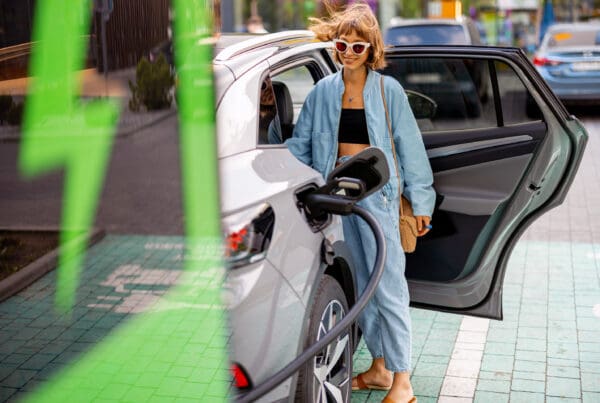As stated by the titular character in Ferris Bueller’s Day Off, “Life moves pretty fast. If you don’t stop and look around once in a while, you could miss it.” Despite being uttered in 1986, this sentiment still rings true. Life hasn’t slowed down, it has only sped up, and time is more valuable than ever before.
As technology has advanced, we’ve grown accustomed to simple things in life being as quick and convenient as possible. Whether it’s finding a recipe, looking up directions, or figuring out the title of a song, we can generally assume that with technology we can figure things out fast. This expectation is no different with our vehicles. With more and more automakers investing in electric vehicle development, and with Tesla’s Model Y already being able to go from 0-60 in 3.7 seconds, we will undoubtedly see more advancements in speed and convenience in the EV market. However, one area where EVs are a little behind in terms of overall convenience is refueling.
While drivers of traditional gas powered cars can find a gas station off pretty much any highway exit and refuel in under 10 minutes, zero-emission drivers don’t have it quite so easy – yet. But with billions of dollars invested in rolling out EV infrastructures and more EVs being sold every year, rapid charging is becoming more convenient and available every day. To better understand what charging rapidly means, let’s ask a few questions to better understand EV charging in general:

What Exactly Is Rapid Charging?
Charging rapidly might sound like common sense, and it is to a degree, but let’s explore the different levels of EV charging to understand what a rapid charge actually means. Somewhat obviously, rapid charging is where a zero-emission vehicle gets a fast recharge. This means that an EV can charge its battery up to 80 percent in 20 minutes, which Car and Driver describes as filling your fuel barrel “with a fire hose.” A rapid charge is delivered by Level 3 charging connections, also known as DC fast charging stations, which use a direct current (DC), 489-volt system to supply adequate power. DC aka “fast charging stations” require special high-end electrical infrastructure and professional installation.
Can I Rapid Charge My EV At Home?
The short answer is probably not due to the high voltage and strength of the electrical infrastructure necessary to power these stations. Some forward-thinking landlords may make the investment in Level 3 chargers, but this would likely be rare and, more importantly, not really necessary, because while at home or at work, a slower charge is more than adequate. Level 2 are the most common form of chargers and are great for waking up fully charged or topping off while at work.


Where Can I Rapidly Charge My EV?
You can rapidly charge your EV at any available Level 3 DC fast charging station, which are located at a variety of businesses, commercial properties, and public spaces. The great news is, with billions of dollars being invested in EV infrastructure rollout from the Biden-Harris administration NEVI plan, finding any level of EV charging station is becoming more convenient. Grocery stores, shopping malls, and businesses of all sorts are becoming aware of the value that hosting fast charging stations brings to their business, and more EV highway corridors are being developed to host fast charging stations. As of fall of last year, electrek.co reported that S&P Global Mobility estimates that there were around 16,822 Tesla Superchargers (Tesla’s DC fast charging station) and Tesla destination chargers in the United States. This is in addition to 126,500 Level 2 and 20,431 Level 3 non-Tesla charging ports.
How Do I Find Somewhere To Rapidly Charge My Electric Vehicle?
One perk of the EV revolution hitting its full stride is that the technology is all being developed fairly concurrently. This is helping facilitate convenient ways of being able to find available charging stations as quickly as they’re up and running. You can find Level 3 charging stations through vehicle manufacture apps, searching map apps on your phone, and google search, amongst many others. Most of these also allow you to set filter options for fast chargers only.


Why Does Charging Rapidly Matter?
Charging rapidly is a necessary step in bridging the gap to a zero-emissions future. People don’t always have hours to refuel or to kill time before they need to get back on the road. Whether they have a long commute, or are driving cross-country, EV drivers need the ability to continue their journey in a matter of minutes, and fast charging stations are the tools that will facilitate this and help make range anxiety a thing of the past. Driving cross-country is entirely doable today in an EV, and much cheaper than in a carbon-emission vehicle, but it does take a bit more planning and mapping out stops, which might involve driving a bit outside of the direct route.
The plus-side of this is, it might give EV drivers an extra 10 or so minutes in our fast-paced world to stop and look around and see what they might have missed otherwise.





